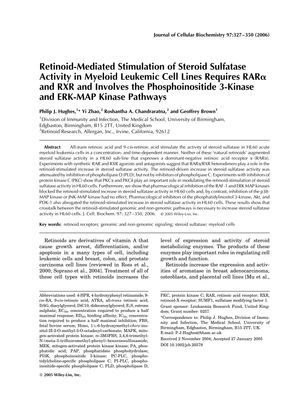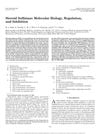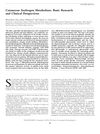Retinoid-Mediated Stimulation of Steroid Sulfatase Activity in Myeloid Leukemic Cell Lines Requires RARα and RXR and Involves the Phosphoinositide 3-Kinase and ERK-MAP Kinase Pathways
September 2005
in “
Journal of Cellular Biochemistry
”

TLDR Retinoids increase steroid sulfatase activity in leukemia cells through RARα/RXR and involves certain pathways like phosphoinositide 3-kinase and ERK-MAP kinase.
In 2005, Hughes et al. studied the role of retinoids in stimulating steroid sulfatase activity in HL60 acute myeloid leukemia cells. They found that all-trans retinoic acid and 9-cis-retinoic acid increased steroid sulfatase activity in a concentration- and time-dependent manner, but not in a HL60 sub-line that expressed a dominant-negative retinoic acid receptor a (RAR). The study suggested that RARa/RXR heterodimers play a role in the retinoid-stimulated increase in steroid sulfatase activity. The retinoid-driven increase in steroid sulfatase activity was reduced by inhibition of phospholipase D (PLD), but not by inhibitors of phospholipase C. The RAF-1 and ERK MAP kinases, and the phosphatidylinositol 3-kinase, Akt, and PDK-1 were involved in the retinoid-stimulated increase in steroid sulfatase activity in HL60 cells. The study concluded that crosstalk between the retinoid-stimulated genomic and non-genomic pathways is necessary to increase steroid sulfatase activity in HL60 cells.


